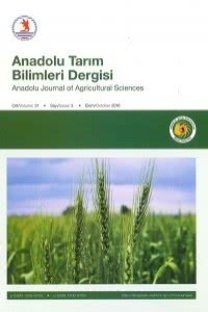Değişik olgunlaşma aşamalarındaki Trabzon hurmalarının bileşimi ve marmelat üretimine elverişliliği
Diospyros kaki, Trabzon hurması, meyveler, bitki bileşimi, bileşim, olgunluk, marmelat, işleme, subtropikal meyveler
The composition of persimmons at differenet maturity stages and suitability to marmelade production
Diospyros kaki, persimmons, fruits, plant composition, composition, maturity, marmalade, processing, subtropical fruits,
___
- ISSN: 1300-2988
- Yayın Aralığı: Yılda 3 Sayı
- Başlangıç: 2018
Bülent SAMANCI, Ercen ÖZKAYNAK, Saadet TUĞRUL
FİKRET ÖZKARAMAN, MUHARREM ÖZCAN
Değişik olgunlaşma aşamalarındaki Trabzon hurmalarının bileşimi ve marmelat üretimine elverişliliği
N. Şule ÜSTÜN, İlkay TOSUN, MUHARREM ÖZCAN, FİKRET ÖZKARAMAN
Synapsis and recombination mechanisms
YUSUF DEMİR, Sezgin UZUN, Bilal CEMEK, FİKRET ÖZKARAMAN
Çiğ olarak tüketilebilen bazı sebzelerin nitrat içerikleri üzerine bir araştırma
Süt sığırlarında besin maddelerinin rumen nitrojen metabolizması üzerine etkileri
HAYRETTİN ÇAYIROĞLU, B. Zehra SARIÇİÇEK
Polietilen malç ve alçak plastik tünel uygulamalarının domates'te verim ve erkenciliğe etkisi
Aydın APAYDIN, Nejdet KAPLAN, Filiz YAMAK
Farklı zamanlarda hasat edilen bazı fiğ türlerinin yem değerinin belirlenmesi üzerinde bir araştırma
